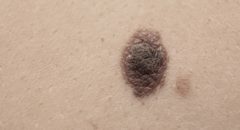
Melanoma is the skin cancer that took the life of the legendary reggae singer, Bob Marley, at the age of 36. It is the most dangerous type of skin cancer. It originates from pigment-containing cells called “melanocytes”, located in the basal segment of the epidermis. These are the cells that make melanin.
There is a myth in the African American community that skin cancer cannot occur the darker your skin is, hence the reason why most African Americans don’t wear sunscreen.
Having melanin doesn’t mean that you can’t get melanoma. Although it is true that black people are less likely to get Melanoma, we, however, are more likely to die from it. Melanoma presents at a rate of 22 per 100,000 in Caucasians and 1 per 100,000 in African Americans. However, African Americans usually present with advanced disease at the time of diagnosis, compared to Caucasians.
In fact, about 52% of African-Americans and 26% of Hispanics find out they have melanoma when it has







